Air Quality
Study: Maternal Smoking During Pregnancy Can Cause Asthma In Your Great Grandchildren
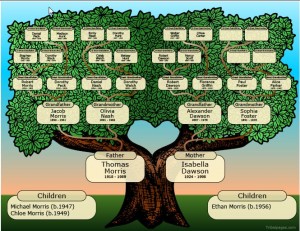 And the evidence just keeps piling-up that we have no clue about the public health impacts of poisoning ourselves.
And the evidence just keeps piling-up that we have no clue about the public health impacts of poisoning ourselves.
Over the past few years, more and more science dollars have been committed to studying the "epigenetic" impact of toxins in the human body. These are impacts that go well beyond just the person originally exposed to those toxins. We expect that harm. What's brand new is the fact that that exposure can keep harming the descendants of the original victim. His or her children could be impacted, or his or her grandchildren, or even great-grandchildren. Individuals who might be born long after the offending facility is out of business can nevertheless still be impacted by its poisons as the get passed along from generation to generation.
This happens not through direct DNA damage, but by damaging the code and behavior of the stuff surrounding the DNA and telling it what to do. This damage can cause a normal cell to go haywire. Changes can be subtle or dramatic. Maybe cancer, maybe a immune system disease, and maybe asthma.
Researchers at the UCLA Medical Center have published a study that concludes that mothers who smoke during pregnancy have a statistically higher risk of causing asthma in their great grandchildren.
"Even though there are multiple causes for childhood asthma, research linking this serious chronic condition to maternal nicotine exposure during pregnancy for up to three generations should give mothers-to-be even more reasons to reconsider smoking,’ said Dr Virender Rehan an LA BioMed lead researcher. "
Follow-Up: Silica Air Pollution at Fracking Sites Out of Control
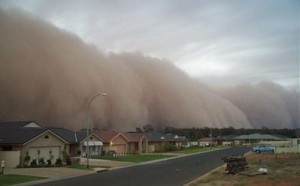 Last summer we told you about a nationwide Centers For Disease Control/National Institute for Occupational Safety and Health (NIOSH) warning to gas and oil field workers about rampant silica air pollution at fracking sites throughout the country. Research had found that pollution standards were being trampled at every site they tested. These were all tests done within the fence line of the well site, so nobody knows what the off-site impacts were/are, or how far downwind they can extend.
Last summer we told you about a nationwide Centers For Disease Control/National Institute for Occupational Safety and Health (NIOSH) warning to gas and oil field workers about rampant silica air pollution at fracking sites throughout the country. Research had found that pollution standards were being trampled at every site they tested. These were all tests done within the fence line of the well site, so nobody knows what the off-site impacts were/are, or how far downwind they can extend.
Now comes a recent follow-up report that breaks down all the information that was the basis of that 2012 industry warning, and its gruesome. Because it's so detailed, we're pasting it in blocks below in one narrative feed.
Fracking uses a lot of sand. There's an entire silica pollution cycle within fracking that's only now getting the attention it deserves. The mining of sand for fracking can take place miles away from the gas or oil plays and threaten new areas never touched by a well. It takes lots and lots of water. There are lots and lots of trucks, and lots of silica in the air at the mine. Just ask the folks along the Red River, to the northwest of DFW in what used to be pristine rolling timbered hill country.
Once it gets to the fracking site, it creates the clouds of silica air pollution that OSHA is so concerned about. The level of exposure the feds found at some of the fracking sites they studied was "enough to overwhelm the maximum use concentration ratings for the half-mask, air-purifying respirators that workers typically wore" while working at the site. Breathing silica is like breathing sand or cement into your lungs. Eventually it fills them up and hardens your air passageways and you suffocate to death. Happens in the cement industry a lot. We know this is a real and current hazard to workers at the site. We have no idea what kind of hazard it is to people off-site. None. Zero. Nada.
This is why regulators must be cautious in deciding things like "setback distances." The difference between 1000 and 1500 feet could be a dramatic drop-off in silica pollution. That could be an important margin of error for public health we need but don't know much about right now.
Here's the story from Robert Iafolla in Bloomberg:
Workers' Silica Exposure at Fracking Sites Far Exceeds OSHA Limit, NIOSH Study Finds
The concentration of silica in the air workers breathe exceeded occupational health criteria at all 11 hydraulic fracturing sites tested by the National Institute for Occupational Safety and Health, the American Industrial Hygiene Association announced July 31.
Researchers measured the silica levels of more than 100 personal breathing zone samples at fracking sites in five states, finding levels above the Occupational Safety and Health Administration's permissible exposure limit (PEL), NIOSH's recommended exposure limit (REL), and the American Conference of Governmental Industrial Hygienists threshold limit value (TLV).
In some instances, the samples exceeded OSHA's PEL by a factor of 10 or more. That level of exposure is enough to overwhelm the maximum use concentration ratings for the half-mask, air-purifying respirators that workers typically wore, the study said.
“Although effective engineering controls for crystalline silica are well established in other industries, controls to limit silica-containing dust generation during hydraulic fracturing are only now emerging due to the relatively recent understanding of the hazard and magnitude of exposure risks,” the study authors wrote.
The study appears in the Journal of Occupational and Environmental Hygiene, published jointly by AIHA and ACGIH.
NIOSH first flagged the occupational hazard of silica exposure at fracking sites in a June 2012 Hazard Alert. The journal article describes the research that informed that alert (42 OSHR 576, 6/28/12).
Silica sand is a crucial and common component in many fracking operations. Silica is often mixed with the water and chemicals injected into shale formations during fracking, with silica acting as a “proppant” to keep the underground fractures open to allow oil or natural gas to flow. Approximately 28 million metric tons of silica sand was used in fracking during 2012, according to the U.S. Geological Survey.
The heavy use of silica is reflected in the air contamination at fracking sites. Just over half of the 111 samples that NIOSH tested exceeded the PEL for silica, while 69 percent exceeded the REL, and 84 percent exceeded the TVL.
OSHA's PEL is calculated from the percent of crystalline silica in the respirable dust; the PEL for 100 percent silica would be 0.1 milligram per cubic meter of air. NIOSH's REL is 0.05 milligram per cubic meter, and the ACGIH's TVL is 0.025 milligram per cubic meter.
OSHA's proposed regulations for silica could lower the PEL to 0.05 milligram per cubic meter, although that has been met with fierce resistance from industry. The proposal has been on hold at the White House Office of Management and Budget since February 2011.
Researchers took samples at fracking sites at five shale formations: Bakken in North Dakota, DJ Basin in Colorado, Eagle Ford in Texas, Fayetteville in Arkansas, and Marcellus in Pennsylvania. The fracking operations at those locations used silica as the proppant, with the exception of the Bakken site, where 60 percent of the proppant was a ceramic material.
None of the 10 samples taken at Bakken exceeded OSHA's PEL. Two-thirds of the samples at Marcellus, 54 percent at Fayetteville, 53 percent at DJ Basin, and 50 percent at Eagle Ford went over the PEL.
Typical fracked gas or oil wells go through 12 to 20 stages, with each stage requiring hundreds of thousands of pounds of sand, creating airborne dust at the sites, the study said.
Sand is delivered from tractor trailers and pumped with compressed air through fill ports into on-site storage and delivery vehicles known as “sand movers.” Those sand movers use motor-driven belts called “dragon tails” to supply sand to blender trucks, with larger loads requiring multiple vehicles moving sand across a transfer belt. Blender hoppers pump the sand-as-proppant through a manifold, piping, and into the well.
Workers operating sand movers and transfer belts are exposed to the highest levels of silica, the study said.
Overall, the study found seven points of dust generation that were common at all 11 sites:
• from “thief hatches” on the tops of sand movers during filling,
• from the sand mover belt,
• from the momentum of falling sand below the dragon tail at the blender hopper,
• from transfer belts when sand is deposited onto the belt and conveyed to the blender,
• from sand leaving the end of the dragon tail,
• from fill ports of sand movers during refilling operations, and
• from truck traffic at the fracking site.
The study said that about 435,000 workers were employed in the U.S. oil and gas extraction industry during 2010, with nearly half employed by well servicing companies, including companies that use fracking.
The study “Occupational Exposures to Respirable Crystalline Silica During Hydraulic Fracturing” is available at http://tinyurl.com/mn5sbc3.
Dallas Public Participation Rollback Continues: Staff Eliminates Aug 15th Public Hearing, Provide None in Evening
 And just like that, Dallas City Hall decides that more public participation in writing the new gas drilling ordinance isn't what they want after all.
And just like that, Dallas City Hall decides that more public participation in writing the new gas drilling ordinance isn't what they want after all.
Less than two weeks after releasing a proposed schedule for the City Plan Commission that included three public hearings on the subject, city staff issued a revised schedule for the Plan Commission that scraps the first public hearing for August 15th, and leaves the other two in the middle of the day despite appeals from the Plan Commission itself to arrange for evening public hearings.
Now, the first chance citizens will get to weigh in will be August 22nd at 1:30 pm instead of 4 to 6 pm on the 15th.
What is City Hall scared of? You.
If they had their way, some city staff would sequester members of the CPC in an undisclosed location for the duration of this process, with no opportunity to get contaminated by views other than their own – which are motivated by still trying to accommodate the discredited Trinity East permits.
You represent a complete repudiation of that point of view.
You're armed with the latest science. They want to rely on 2-year old Dallas Task Force recommendations that they also engineered to help Trinity East and ignore everything that came after that.
You're armed with real-life experience of what it's like to live near these kinds of operations. They want the CPC to rely on the soothing assurances from industry and paid-for regulators.
You want an objective reckoning of the facts and hazards. They want to find a way to get Trinity East its permits.
The Plan Commission meets this Thursday at City Hall beginning at 8:30 am in room 5ES with another workshop session lasting until at least 1:30 pm coving topics such as Pad Operations, Site Monitoring, and Permitting. There will be no opportunity for official public comment, but if you want to make unofficial comments on how undemocratic this process is becoming, be our guest. Concerned citizens need to take back their city from out-of-control staffers who want to give permits to discredited companies and sites based on secret deals, no matter the cost to public health or safety. Grabbing back control of the reigns becomes a public duty at this point.
New Proposed Schedule for City Plan Commission Drafitng of Gas-Drilling Ordinance
AUGUST
August 8th Meeting
8:30 – 9:00 am Review of Draft Ordinance
9:00-10:30 am Review of Topics
Pad Site Operations
Gas Drilling/Well Permit
Bonding Requirements
Site Monitoring and Review of Permit Application
Required Plans
10:30-11:00 am
Summary of discussion topics for the day
Revisit previous topics
11:00 am -1:30 pm – CPC Briefing (working lunch)
1:30 pm – CPC hearings on zoning cases
Immediately following CPC Public Hearing – 6:00 pm
Continue discussion of unfinished topics for the day
AUGUST 22 Meeting
8:30 am – 9:00 am Review of Draft Ordinance
9:00 am -10:30am
Physical Pad Site
Emergency Response
Abandonment and Restoration
10:30-11:00
Summary of discussion topics for the day
Revisit previous topics
11:00-1:30 CPC Briefing (working lunch)
1:30pm: 1st CPC Public Hearing on Gas Drilling
SEPTEMBER
September 12th Meeting
8:30 – 9:00
Review of drafted provisions of the Ordinance
9:00-10:30
Discussion of next Topics:
Air Quality
Water
Seismic Permits
Pipelines
Compressors
10:30-11:00
Summary of discussion topics for the day
Revisit previous topics
11:00-1:30
CPC Briefing (working lunch)
September 26
8:30 – 9:00
Review of drafted provisions of the Ordinance
9:00-10:30
Finish discussion of topics from previous meeting
10:30-11:00
Summary of discussion for the day
Revisit previous topics
11:00-1:30
CPC Briefing (working lunch)
1:30 pm: 2nd AND LAST Public Hearing on Gas Drilling at CPC
After public hearing – vote to make recommendations to City Council
Ozone Season Update: July Goes Out Like A Lamb; August Comes In Like a Lion
 After an uncharacteristically mild June and July produced the best ozone season in six or seven years, August arrived to remind us what summer in Texas is supposed to be about.
After an uncharacteristically mild June and July produced the best ozone season in six or seven years, August arrived to remind us what summer in Texas is supposed to be about.
Seven of 20 smog monitors saw their annual highs set last Thursday, August 1st, when temperatures begin to climb back to the triple digits, with the one at Arlington's Municipal Airport recording a regional 2013 high of 93 parts per billion.
Perhaps more worrisome is the fact that on the same day, the Dallas Hinton Street site by Mockingbird and Interstate 35 also set its annual high of of 87 ppm. That's the first time this season that a monitoring site so far east in the heart of the DFW central corridor has gone above the magical 85 ppb level. And it's at a site that had not been a problem for ozone until the last couple of years. The fact that it's still capable of reverting back to these kinds of readings despite the weather-driven reprieve this year is a bad sign.
DFW hasn't yet achieved compliance with the 85 ppb standard for smog left over from 1997, and must meet a newer, tougher standard of 75 ppb by the end of the summer in 2018.
To date, four DFW monitors have had an "exceedence" of the old 85 ppb standard this year – Hinton, Arlington, Denton Airport, and Pilot Point. It takes four such exceedences to produce an official Clean Air Act "violation" that counts against the region's goal of "attainment" with the standard. So, four strikes and you're out.
By this time last year, we'd already achieved that level of non-compliance. As of now, we're still three bad air days away from that milestone.
On the other hand, all but two DFW ozone monitors have had one or more exceedence of the 75 ppb one, and in fact four have already had four or more of them – Fort Worth Northwest, Keller, Denton Airport and…Hinton Street. That's how tough the new standard is. Even after a two month head start of rain and cooler weather, DFW is already violating it at four monitors.
This week's forecast is calling for Texas-like August heat. If the wind drops below 10 mph, we should see smog levels rise again. Traditionally, August and September are among DFW's worst bad air months. Whether 2013 will be the first year to see no official violations of the old 85 ppb standard will depend on whether the next two months are as kind to us as the last two.
After You Allow It, How Will You Police It?
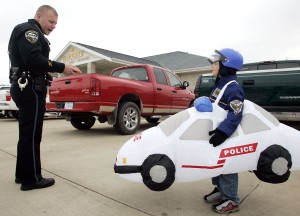 Not very well, if you're allowed to do it in Texas. The prolific Peggy Heinkel-Wolfe has the story of why a fracking well blow-out in the middle of Denton got such a slack response from all those who were supposed to be protecting the public from these kinds of things.
Not very well, if you're allowed to do it in Texas. The prolific Peggy Heinkel-Wolfe has the story of why a fracking well blow-out in the middle of Denton got such a slack response from all those who were supposed to be protecting the public from these kinds of things.
One huge problem with the new Dallas gas ordinance is that it will require a multi-staffed new Office of Gas Inspections available to answer calls 24/7. Time and again, City Hall staff's response to questions about who's going to be responsible for enforcing the regs of the ordinance is simply, "The gas inspector will do that."
But no one at City Hall has a clue how much that would cost, what it would entail or how soon it would be established if ever. Not a single council person has advocated funding for such an office. So you know, we're all in favor of fracking, but regulating the stuff, not so much.
Moreover, the actual City of Dallas department that would host such a position, the Office of Environmental Quality, has been completely MIA in all the proceedings of the last year – ever since the 2011 Task Force went out of business last February or so. No input has been provided or requested from the OEQ to better understand how this new bureaucracy is supposed to work.
You can't rely on EPA. They have nobody in the field to help. You can't rely on the state – as Peggy's story makes clear. And Dallas can't be bothered to think about these things now while they're still busying themselves trying to make a land swap with Trinity East so it can get the company its permits. Like everything else about drilling in Dallas under Mike Rawlings and the still-hovering Mary Suhm, all other details, problems, policies, etc have to take a back seat to fulfilling the secret deal Trinity East and the City made. Nothing else matters until these permits are in place. Those are the priorities at City Hall today.
Past Colorado Medial Society Prez: Fracking is an “Experiment in Motion” on Public Health
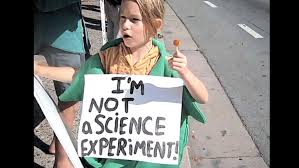 Dr. Michael Pramenko seems like a reasonable guy. He's not a Greenpeace treesitter, or running for elected office, or part of any unruly mob.
Dr. Michael Pramenko seems like a reasonable guy. He's not a Greenpeace treesitter, or running for elected office, or part of any unruly mob.
In fact, he's so reasonable that he's the former president of the Colorado Medical Society.
And Dr. Pramenko calls the current hydraulic fracturing boom in the state’s oil and gas industry an “experiment in motion. One that could lead to higher rates of cancer and other illnesses over the next 10 to 15 years."
But he's not concerned with the massive acute exposures that can happen during accidents or blow-outs. No, he's concerned with the harm done by the routine, boring everyday kind of low-level chronic exposure that the Texas Tech researchers in the post below are documenting.
“Are there people out there being exposed to low quantities [of carcinogens] that we won’t ever know about? Sure,” he said. “Are there going to be some cancers down the road that come about across the United States? I think that's true.
You'll be relieved to know that state regulators have everything under control. Colorado Department of Public Health and Environment (CDPHE) spokesman Mark Salley said the department closely monitors the industry to protect public health: “The [CDPHE] has regulations in place, including required permitting, set-back requirements, use of ‘best practice’ methods by industry to minimize the impacts.”
Yes, that should do it.
There are 50,771 active oil and gas wells in Colorado – 20,260 of them in Weld County on the northern Front Range. More than 90 percent of the state’s wells are fracked at least once and often multiple times.
Trying to regulate fracking hazards is like trying to hit a moving target. Every month there's a new study out that shows a new threat or one that has been under-emphasized. Like so many other on-going experiments we're a part of, this one will claim thousands before we understand what was really happening.
EPA will Be Issuing Power Plant Permits in Texas Despite Greg Abbott’s Campaign for Governor
 There was never really any question, but just in case you were wondering, EPA will indeed be taking over the permitting of power plants in Texas based on new greenhouse gas emission rules.
There was never really any question, but just in case you were wondering, EPA will indeed be taking over the permitting of power plants in Texas based on new greenhouse gas emission rules.
The U.S. Court of Appeals slapped down Texas Attorney General Greg Abbott's recent challenge to the Environmental Protection Agency on Friday, one trying to keep the EPA from considering such emissions when they permit new facilities or approve large modifications on old ones.
Another Study Reveals Why Our System of “Safe Levels” is a Tragic Mirage
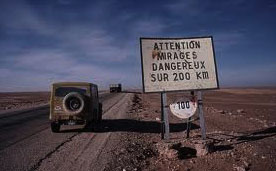 Gas well, cement plant, lead smelter, plastics plant, refinery, compressor, incinerator. Anyone who's ever lived next door to an industrial polluter knows there's the way the facility appears to be operating on paper and how it's actually operating in the real world.
Gas well, cement plant, lead smelter, plastics plant, refinery, compressor, incinerator. Anyone who's ever lived next door to an industrial polluter knows there's the way the facility appears to be operating on paper and how it's actually operating in the real world.
The way it's operating on paper is completely portable. You can take this version of the facility anywhere. The numbers and printouts and charts can show up to congressional hearings. They can be included in PowerPoint presentations, along with glossy pics of the place itself. They can be summarized. They have no smell. They have no texture. They don't make a sound. On paper, expressed in language and figures, the facility may seem to be operating properly under every permitted limit it has to abide by.
On the ground however, it may be a completely different story. It may mean strange petrochemical or plastic smells wafting through your house in the middle of the night. It could mean a series of loud explosions or pops that nobody has ever been able to explain to you. It could mean rashes on your skin, or headaches, or nausea, or asthma attacks. It could mean living in fear of chemical assault. All the time.
This version of operations is not portable. One can write about it or talk about it, but that will not put other people there. And indeed, descriptions of these circumstances can sound so nightmarish that listeners assume you're exaggerating. You're not. Not even video or film can immerse you in it. No amount of reporting about it can make you feel in it. The map is not the place. The only way to know this side of operations is to live it. Day in, day out.
The difference between what the paper version of polluting says, and what the people living it know, is a front line of social justice in the 21st Century.
It also happens to be a major frontline for science, as demonstrated by a recent landmark study from, of all places, Texas Tech about how the sum of pollution is greater than its sometimes desperate parts We're late in covering this, but thanks to the Denton Record Chronicle's for bringing it to our attention back in June. Because this study underscores once again in a big way why our entire system of regulating chemical exposures is so completely contrary to what we know about how those exposures are affecting us.
Tech scientists took two chemicals that are known to cause cancer in large amounts, arsenic and estrogen, and exposed human prostate cells to very low amounts of each. The amounts they exposed the prostate cells to were so low, they fell below the EPA regulatory "safe" level that limits releases of the chemicals from polluters. Individually, the exposures of the cells to arsenic and estrogen were so low as to believed to be harmless. But they weren't.
Instead, the Tech researcher's peer-reviewed, journal-published study found the combination of the low doses of the two chemicals combined was almost twice as likely to create cancer in the prostate cells as the single chemical exposures individually. That is, the toxic interaction or "cumulative effect" of the two chemicals was more than the sum of their parts. There was a "synergestic" reaction inside the cells that the current regulatory system doesn't recognize as even a possibility.
“The majority of cancers are caused by environmental influences,” Singh said. “Only about 5 to 10 percent of cancers are due to genetic predisposition. Science has looked at these chemicals, such as arsenic, and tested them in a lab to find the amounts that may cause cancer. But that’s just a single chemical in a single test. In the real world, we are getting exposed to many chemicals at once.”
Singh became interested in looking at arsenic because water well problems in his native India had recently highlighted mass poisonings from contamination of the chemical. He wondered how this exposure would interact with other carcinogens within the same population.
He focused on estrogen as the second chemical because of the chemical’s ubiquity. Many plastics, such as food can liners, release bisphenol A (BPA), and other chemicals that mimic estrogen in the body.
Unlike more potent chemicals that do major damage to the DNA in a cell, such as benzene, arsenic and estrogen aren’t major mutagens Singh said. Instead, their presence tends to stop certain genes from expressing. The process is called DNA hypermethylation.
…the two chemicals stopped the MLH1 gene, which is responsible for sending the signal to start the self-destruct sequence when a cell is damaged. Because the self-destruct couldn’t activate, the cells became cancerous after exposure.
“With the lower dose not killing the cell, it’s causing damages that go under the cell’s radar. We found when you have two compounds together, lower doses could be more serious problem.”
This is what's called a non-linear impact. You can actually get harmed more by long term low-level exposures than by intense bursts of short term exposure – exactly the opposite of the way the system regulates chemical exposures now.
Currently that system assumes it can protect the public health from exposures to over 80,000 chemicals on the marketplace by regulating the average intake of these chemicals one at a time. It says: "we know that lead and benzene are bad for you if you OD on them, but by only exposing you to a little bit every day, we can keep you from getting damaged by its health effects." The dose is the poison. A little bit cant hurt you, but a lot can kill you.
Unfortunately, this view, which is the foundation for all modern regulatory schemes for chemical pollution, is based on a worldview of human physiology that's now dangerously out of date. For the past 50 years at least, study after study has shown that there are a lot of less-than-drop-dead health effects that couldn't be diagnosed without modern technology. The more we learn about how how bodies work the more we learn new ways about how chemicals can really screw them up. The Tech study is just the latest, albeit dramatic example.
Moreover, of those 80,00 chemicals only about 200 can be said to have been studied even remotely "thoroughly" and fewer that that have been examined for their interactions with any of the other 79,999. So the system itself is a big fat theory in progress, with very little real science supporting it. We're all its Guinea Pigs. It's an hypothesis.
But its a hypothesis with billions invested in it. So to prove it wrong is to threaten a lot of people with a lot of money.
Which is why the chemical industrial-government complex is trying very hard to hold back the tide of this kind of science and what it means. Meanwhile the gap between the paper version of how things are operating at a facility and the real world impact of those operations continue to grow. At some point the contradictions will be too much to ignore or withstand. But we're a long way from that point yet. Which is why we need your help to keep fighting on behalf of those folks living the truth on the ground and prevent more victims of this obsolete and harmful regulatory system.
City Hall Apparatchiks Rewrite History, Now Say 1500-Foot Setback Vote Never Happened
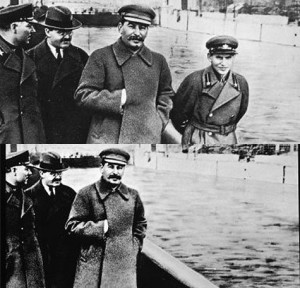 Any doubt that Dallas City Hall is more interested in protecting the Trinity East gas leases than Dallas residents as it writes a new gas drilling ordinance was surely removed yesterday when City Attorney Tammy Palomino flatly lied and told City Plan Commission members that they had not decided on a 1500-foot setback, or buffer zone, between homes and other "protected uses," even though they had done precisely that at their June 20th meeting.
Any doubt that Dallas City Hall is more interested in protecting the Trinity East gas leases than Dallas residents as it writes a new gas drilling ordinance was surely removed yesterday when City Attorney Tammy Palomino flatly lied and told City Plan Commission members that they had not decided on a 1500-foot setback, or buffer zone, between homes and other "protected uses," even though they had done precisely that at their June 20th meeting.
Employing the Orwellian language of a Soviet history writer, Palomino simply choose to ignore the results of a decision she didn't like and pretend the vote never happened. She argued that there was "no consensus" on the CPC for a 1500-foot setback – even though that very word was used to describe the results of June 20th meeting by CPC members themselves, as well as the media.
Instead, she handed out an official "summary" of CPC drilling recommendations to-date that not only only didn't include ANY mention of the 1500-foot setback decision, but instead listed a 1000-foot setback limit that had specifically been rejected by the Commission!
That missing footage is critical. 1000-foot setbacks, with a variance (or exception) up to 500-feet, were recommended by the city's gas drilling task force, but we now know those recommendations were tailored to fit the circumstances of the Trinity East lease sites along the Trinity River in northwest Dallas. That is, with a variance that could put wells 500 feet from homes, the Trinity East sites could be approved. With the CPC's 1500 foot-setback, there's only a variance to 1000 feet. That makes it impossible for Trinity East to set up shop where they want. And that's why Palomino deliberately, but unethically, left the 1500 setback out of her "summary."
The problem for Palomino in trying to pull this kind of disappearing act is that there were way too many witnesses to the original vote, including reporters. According to KERA's account "One of the first changes that grabbed consensus of the Plan Commission was an increase to the buffer zone or setback between gas wells and homes, businesses, schools, and recreational areas. Plan Commissioners want 1500 feet, not the 1,000 recommended by the task force." Channel 4 reported the same thing. There's also the fact that the city archives audio tapes of every CPC meeting, and citizens have have begun to videotape the meetings to catch this kind of bullying by staff.
What all of this will show is that on June 20th CPC member Paul Ridley took great pains to clarify that the CPC had indeed reached a consensus that they wanted a 1500 foot setback – considered the most protective setback currently used by any North Texas city. He even asked the question, "Do we have consensus on this?" and heads all nodded and not one verbal objection can be heard – other than from Tammy Palomino – who is stuttering that the city attorneys are going to have to make sure they can do this (no explanation of why Dallas can't). There's no question about what happened.
Which is why even the most cynical observers were shocked at the clumsy effort by Palomino to erase the decision from history by way of her "summary." It's like the City can't pass up an opportunity to create an ethical crisis whenever it deals with the Trinity East leases.
All the video and audio tape is being assembled into a nice neat package for the public and media. The case against Tammy Palomino will be devastating. As a result of her premeditated misrepresentations, Palomino should resign, or at the very least be re-assigned away from work on the new gas ordinance. She's representing Trinity East in these proceedings, not the citizens of Dallas.
Yesterday's episode was but the most extreme example of the kind of bullying and steamrolling that staff is employing against the CPC to end up with an ordinance that is Trinity East-friendly. As they have for the past three years or so, they're contorting the system to make it fit Trinity East's permits.
Besides the setbacks issue, staff really wants the CPC to OK gas drilling in parks, and a majority of CPC members today were willing to say out loud they supported that goal. That's right – after 7 months of crowds filling city hall to protest drilling in parks, Official Dallas is still moving toward approval of that idea. It's based on the idea of "unused" park land – a concept that has never been defined by the city or anyone else.
Trying to further this goal, staff actually came to Thursday's meeting with a US Parks Department definition of "active" and "passive" park land with the idea that Dallas could adopt something similar and allow drilling on the "passive" acreage. According to the list, "passive" park land is defined as land used for hiking, rock climbing, horseback riding, mountain biking, and camping, among others activities. Sounds pretty "active" doesn't it? Despite their propensity to allow park drilling it struck the CPC the same way and they firmly rejected staff's approach. Still, just like the 1500 foot setback issue, staff won't be satisfied until they get Trinity East what it wants.
Which brings us to a hard truth that the media and the public need to absorb. As bad and blatant as it is, Tammy Palomino's unethical behavior is only a symptom of a much larger rotten problem with this entire gas drilling ordinance process that has been present from before the task force was created right up until now. It's impossible for staff to both be advocates for the Trinity East leases in the writing of a new gas ordinance and give objective counsel to the CPC and Council on how to write the most protective ordinance. They cannot serve two masters.
Palomino and others have been told they need to find a way to make sure Trinity East gets what it wants in this new gas drilling ordinance. That makes city staff just another lobbying arm of Trinity East, not honest brokers trying to produce the best and most protective policy for Dallas residents. Every piece of advice they give is meant to further the leases, not the public good.
Because of this fact, an independent counsel needs to be brought in for the purpose of helping draft this new gas drilling ordinance. Policymakers need to have the best information, the most objective information, if they're going to make good policy. They're not getting it from city staff when it comes to drilling.
It's time to quit pretending this isn't a big problem. When city attorneys start trying to erase public policy decisions because they conflict with a private interest they're serving, the system is no longer working. It's corrupt and must be replaced before that corruption is allowed to spread.
Stay tuned. You're going to be hearing a lot more about this.
Scheduling Note: Although the CPC released a schedule for its work on the drilling ordinance only last week, including three public hearings, things may be changing quickly with additional workshop times and different dates and times for hearings. There was a lot of talk about schedule changes on Thursday, but nothing was decided. Right now the first opportunity for you to express outrage at this latest development is a public hearing slated for August 15th, 4 to 6 pm, at City Hall but stay tuned to make sure.
It’s Official: Trinity East Zombie Permits Coming Back; Dallas Gas Ordinance Rewrite Schedule Released – 1st Public Hearing August 15th
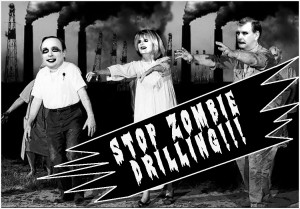 They just won't take a big fat public "No!",
They just won't take a big fat public "No!", or two, or three, for an answer.
We've learned form sources inside City Hall that Trinity East – with a big assist from City of Dallas staff and Mayor Mike Rawlings – is preparing to once again attempt to permit its three proposed drilling and refinery/compressor station sites along the Trinity River.
While the company and city staff keep trying to win support for a weaker new gas drilling ordinance than citizens have repeatedly requested, a deal is being wheeled that would have Trinity East trading its lease on park land for another piece of city-owned property in northeast Dallas. Meanwhile, the City is also working feverishly to firm up support for its official position that it can't possibly turn down Trinity East without losing a lawsuit – an opinion no one outside of City Hall, save Trinity East, shares so far.
Yeah, the secret gas deal that the Observer uncovered in February got City Manger Mary Suhm to finally leave the building come December, but she's not going until she gets those Trinity East sites permitted the way she promised behind closed doors.
All of which makes the writing of a brand new Dallas gas drilling ordinance even more important now. And last week the City Plan Commission released its two-month schedule of how that's going to be done (see below), complete with three (daytime) public hearings with an ETA to the City Council by October.
There will be just six more meetings of the Plan Commission to review the almost two-year old Dallas Gas Drilling Task Force recommendations and decide to take them at face value, strengthen them, or weaken them. Scatted among these will be three public hearings – the first one in a little over two weeks on August 15th from 4 to 6 pm. The Commission goal is to get a new drilling ordinance to the City Council by October, when the terms of current members expire.
That's the official agenda. The unofficial one is trying to find ways to weaken the new ordinance enough to allow Trinity East to be able to get their proposed sites permitted. There's already been plenty of evidence at previous meetings indicating how desperate staff is in trying to give their departing boss a going-away gift.
We know most of you can't come to the Plan Commission workshops on Thursday mornings to follow the nitty-gritty of how this plays out. We'll be there reporting that to you, no problem. But what we can't do is manufacture warm bodies to put in seats for those three public hearings. Please make it a point to show up at one or more of these – and in particular, the very last one on September 26th as it rolls into the City Council.
Trinity East lobbyist Dallas Cothrum is on record as saying the company's three previously proposed sites on parkland, flood plains and near a new soccer complex that have now been rejected twice by this same CPC were the "best possible" places the company could have chosen for drilling and processing. So now the battle is over the less-than-best possible places. We can't wait to see what part of town the City and Trinity will decide to sacrifice for that designation as part of their possible land-swap deal.
Making sure a new drilling ordinance is the most protective it can possibly be is the only way left to finally drive a stake through the heart of the Trinity East gas permits. You have no idea how much we hate to ring the alarm about these damn permits again, but the stakes are very high and we're on the verge of winning one of the Barnett Shale's biggest citizen victories – if we can just keep the pedal to the metal. Bring your lead feet to the first hearing on August 15th.
Schedule for the City Plan Commission's Workshops and Public Hearings on the New Gas Drilling Ordinance
(All workshop meetings start at 9 am and take place on the 5th floor at 5ES in City Hall unless otherwise indicated. Specific Room locations for the Public Hearings at City Hall will be announced. Topic #’s refer to the Dallas Gas Drilling Task Force Recommendations Matrix.)
THURSDAY, JULY 25
9:00 am – 12 Noon CPC Workshop
• Topic 4 – Pad Site Operations
THURSDAY, AUGUST 8
9:00 am -12 Noon CPC Workshop
• Topic 9 – Gas Drilling/Well Permit
• Topic 14 – Bonding Requirements
• Topic 15 – Site Monitoring and Review of Permit Application
THURSDAY, AUGUST 15
1:30 pm – 3:30 pm Workshop
• Topic 13 – Required Plans
THURSDAY, AUGUST 15th PUBLIC HEARING: 4:00 – 6:00 pm
THURSDAY, AUGUST 22
9:00 am to 12 Noon CPC Workshop
• Topic 1 – Air Quality
• Topic 2 – Water
THURSDAY AUGUST 29
9:00 am – 10:45 am CPC Workshop
• Topic 3 – Physical Pad Site
• Topic 16 – Emergency Response
• Topic 5 – Abandonment and Restoration
THURSDAY, AUGUST 29th PUBLIC HEARING: 11:00 AM -12:00 NOON
THURSDAY, SEPTEMBER 12
9:00 – 12 Noon CPC Workshop
• Topic 10 – Seismic Permits
• Topics 6 – Pipelines and Compressors
THURSDAY, SEPTEMBER 26th PUBLIC HEARING 1:30 PM -?
(Agenda: What to recommend to City Council)
